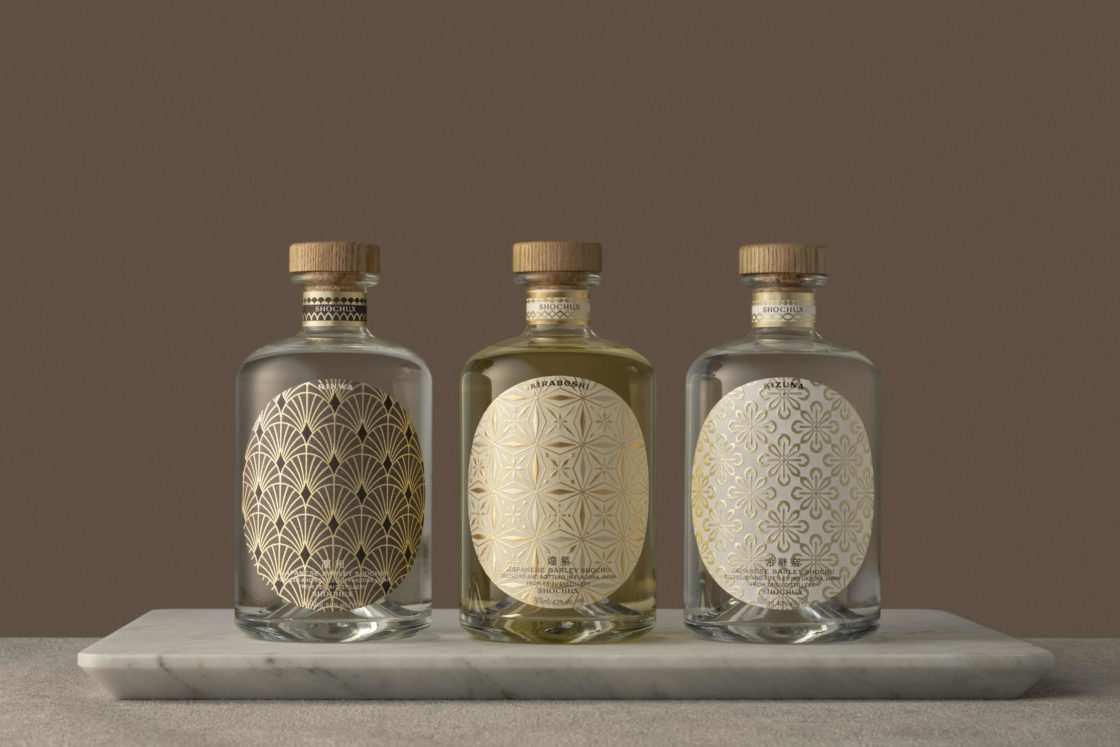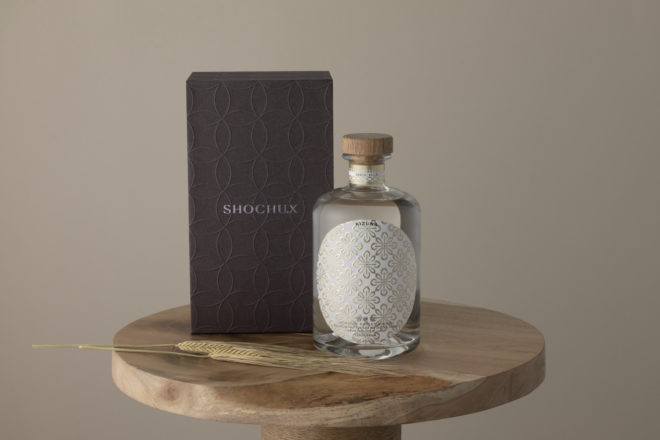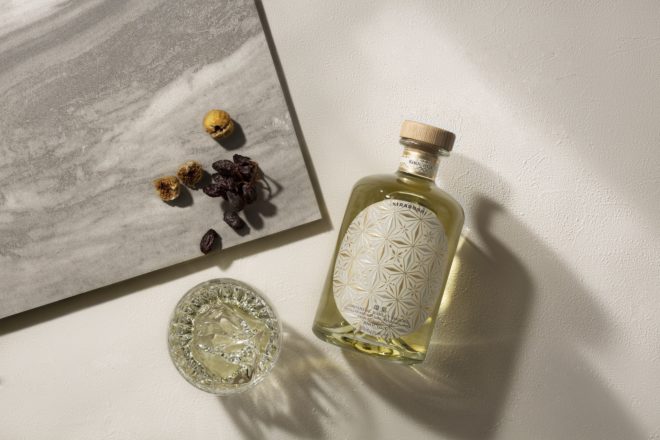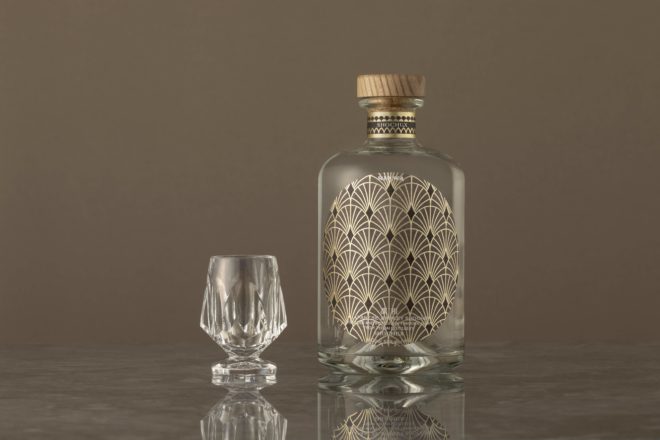Tonight we’re trying two shochus plus a quasi-shochu under a new private label called Shochu X. While several shochu brands outside of Japan are from non-distilling producers (NDPs), the concept isn’t super common in Japan’s domestic shochu world. So what can Shochu X do that the makers themselves won’t? Let’s take a look.
Shochu X was launched back in 2020 by Keisuke Hashimoto, who by his own account had no background in shochu, no family connections to the alcohol industry, and he isn’t from shochu ground zero (Kyushu). Instead, a part-time job at an izakaya turned him into a fan of the category, eventually leading him to:- See the success of Japanese whisky and sake outside of Japan, and wonder why shochu hasn’t been part of that
- Do a year-long internship at a shochu trading company
- Recognize that shochu has the potential to be a worldwide spirit vertical alongside vodka, gin, brandy, etc.
- Notice that while some independent brands of sake have resolved the overseas marketing and branding issues in that category, there wasn’t anything similar in shochu.
That culminated in the launch of Shochu X, a super-premium brand of shochu. There weren’t many people starting new companies in the space. And he wants to overcome the marketing and branding issues shochu faces in overseas markets.
Essentially, Hashimoto-san is looking to address a lot of the hurdles facing widespread non-Japanese adoption of shochu that we’ve highlighted here on nomunication.jp in the past. That means addressing transparency in labeling, product naming, category positioning, legal classification outside Japan, the absorbance regulations, and a first-experience strategy. Issues that are yet to be addressed by makers and the shochu industry.
Given Hashimoto-san’s motivations for launching the brand, it’s probably safe to assume Shochu X will eventually be made available outside of Japan. In that sense, it’s pretty easy to draw parallels between Shochu X and The SG Shochu.
But the respective approaches are drastically different. While The SG Shochu targets the mixology/on-trade market given Shingo Gokan’s connections and resume, Shochu X is trying to position itself as a luxury direct-to-consumer shochu brand. At least for now, you either buy the bottles directly from Shochu X, or you don’t buy them at all. The company wants to “design” your first experience with shochu.
And it’s priced like a luxury, designer brand shochu–something that hasn’t existed until now. Their first release, Kizuna, costs 6,800 yen. The second release, Kiraboshi, will set you back 9,500 yen. The third release, Rinwa, costs a whopping 27,500 yen. I’d venture to say that “luxury, designer brand shochu” is the opposite of most Japanese people’s expectations of shochu. Shifting shochu upmarket will be extraordinarily difficult inside or outside of Japan. Some experts say cask aging is the way to do that for overseas markets. At the same time, legally, shochu can’t be cask-aged… for now.
Will Shochu X succeed where so many shochu makers have failed? Will its extreme pricing keep it held back in obscurity, or are consumers willing to pay extra for a curated, luxury shochu experience? Is the value-add provided by Shochu X worth the prices they’re asking? Hopefully, there’s an easy way to get some answers: let’s drink the stuff!
Huge thanks to Mac of Kanpai Planet for these samples. Given that I don’t have the bottles myself and the importance of branding for Shochu X, I’ve used the press photo for this review.
Review: Shochu X Kizuna
The first release from Shochu X is named Kizuna, which I’ll (very) roughly translate as “the ties that bind us.” This one is a barley shochu made by Ebisu Distillery (no relation to the beer). It’s two different kinds of two-row barley: Houshun adds a fruity sweetness, and Haruka Two-Row provides delicate yet robust barley notes.
In addition, Kizuna uses a three-stage fermentation. We’ve discussed the two-stage fermentation of shochu in the past, where the first stage is mostly about creating the yeast starter, and the second is where you add your main ingredient (in this case, barley). Kizuna goes a step further with a third fermentation to bring out more barley notes. And they say it’s using three times the amount of barley-koji as a standard shochu.
After distillation, the shochu is aged for five years in enamel tanks, helping to deepen the sweetness.
Nose: Grassy, fresh cereals, toast with lime marmalade.
Palate: Underlying notes of rich bitter chocolate and sweet, toasted barley.
Finish: Brown sugar and lasting vanilla.
Score: A-
Price paid: Free for this sample, but a bottle retails for 6,800 yen after tax, 40% abv, 500ml.
Great balance, not too sharp, and with remarkable complexity. This is a stellar example of what barley shochu can be despite the color limitations of the category.
Review: Shochu X Kiraboshi
Up next is Kiraboshi, also distilled by Ebisu Distillery. Rather than fancy fermentation, though, Kiraboshi leans into maturation and blending. It’s a blend of five different shochus:
- 19 year aged in a solera sherry cask (not a seasoned cask, but an actual sherry cask)
- 17 year aged in a solera sherry cask
- 15 year aged in a solera sherry cask
- 10 year aged in an enamel tank (atmospheric distillation)
- 7 year? aged in an enamel tank (vacuum distillation)
They’re still calling this a honkaku shochu, so it must be a primarily white spirit. That prevents them from blending in a lot of #1-3 above.
Kiraboshi means “glittering star,” by the way.
Nose: My first reaction was, “whoa, that’s weird.” More verbose, there’s butterscotch, caramel, butter toffee. Plenty of wood influence.
Palate: Velvety, elegant lightness. Almost airy, since the heat comes so late.
Finish: There are a tiny bit of lasting stone fruits. Sherry may have come through after all.
Score: B-
Price paid: Free for this sample, but a bottle retails for 9,500 yen after tax, 43% abv, 500ml
From a whisky perspective, I have certain expectations when someone says a spirit is matured in sherry casks. Given the color limitations of the category, Shochu X probably pushed the envelope as far as possible, but it wasn’t quite enough for me.
Overall, this is an incredibly easy-to-drink 43% abv shochu with absolutely none of the shochu roughness that many bottles in the category have. It could be a fantastic introductory shochu if it weren’t for the price.
Review: Shochu X Rinwa
Out of the Tenpai Distillery in Fukuoka comes Rinwa. Tenpai’s shochu is famously double distilled, whereas honkaku shochu is ordinarily single distilled. This means that, like whisky distilleries, they have two pot stills: a wash still and a spirit still.
Of course, more distillations mean higher abv, and Rinwa delivers here: it weighs in at a face-melting 58% abv. Whisky drinkers are probably used to this abv (or more) because of cask strength bottlings, but shochus with abv this high doesn’t exist. That’s because, legally, pot-stilled shochu can’t be above 45% abv.
So is this… illegal shochu? No. Rinwa here technically isn’t a shochu. It’s in the “spirits” category per Japanese tax law. Since the absorbance regulations are going away for that category, we may one day see a version of Rinwa that spent a long time in oak.
For now, Rinwa spent ten years in earthenware pots. Another barley shochu.
Nose: Earthy, almost reminiscent of a sweet potato shochu. Sweet barley.
Palate: The initial palate calls to mind anise, licorice, and other spices, but that’s quickly supplanted by deep barley, vanilla, and black pepper.
Finish: Nice and long, but perhaps that’s just the abv lasting through. Great sweetness of barley on the tail end.
Score: C+
Price paid: Free for this sample, but a bottle retails for 27,500 yen after tax, 58% abv, 500ml
There’s a lot to unpack with Rinwa. It has an excellent depth and sweetness about it, but the abv comes roaring at you towards the back of the palate. Add water to open it up, you say. I say: if we’re watering it down, why not just get a shochu that’s at the “right” abv in the first place?
Yes, this is the most expensive shochu-ish bottle I’ve ever seen. Even secondary market prices for the “3Ms” of shochu (Moriizo, Mao, Murao) aren’t this high. Hell, beyond shochu, the retail price is above that of Yamazaki 18!
I have difficulty envisioning a market for bottles like Rinwa. Extremely high abv, but it can’t be aged in casks. Extremely high abv, but it can’t be flavored or sweetened. How many people are looking for unaged, barley-made koji spirits around 60% abv? Until genuine wood cask aging for shochu becomes a thing, I can’t see bottles like this getting a lot of traction.
Calling Hashimoto-san ambitious would be an understatement. He’s already said he wants to build his own shochu distillery, but the National Tax Agency only issues licenses for new shochu distilleries in exceptional circumstances (demand for shochu is, unfortunately, declining in Japan). Here’s to hoping he finds an award-winning permutation of koji, raw ingredients, distillation, and maturation that can truly propel the category even further.
Hi there! I created and run nomunication.jp. I’ve lived in Tokyo since 2008, and I am a certified Shochu Kikisake-shi/Shochu Sommelier (焼酎唎酒師), Cocktail Professor (カクテル検定1級), and I hold Whisky Kentei Levels 3 and JW (ウイスキー検定3級・JW級). I also sit on the Executive Committees for the Tokyo Whisky & Spirits Competition and Japanese Whisky Day. Click here for more details about me and this site. Kampai!




